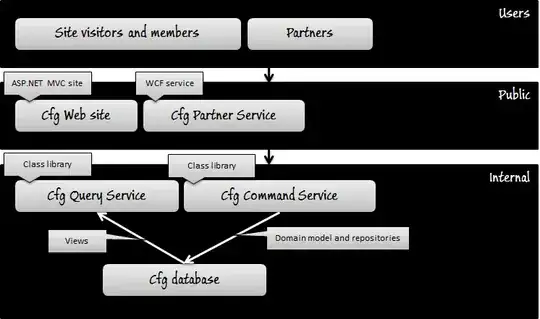In the previous months I have been asking a lot of questions concerning the architecture of an application I'm working on. Thanks to the answers the architectural design has changed - in fact, it has really been simplified as shown in the following graph:

Internally I have a two services (NOT WCF!) that follow CQS principles. It means that the query service simply returns database views; while the command service has a full domain model that contains all business logic, and repositories to access the database (no event mechanism or other complex pattern here). Both services use the same database. These services are class libraries, NO WCF services, because they are used only internally so I don't need the overhead of WCF (don't distribute your objects, Martin Fowler's first law).
These internal operations are used by the ASP.NET MVC site and the PartnerService. This PartnerService is a WCF service, which exposes the functionality I would like to be exposed to partners.
If I ever need to scale because of high traffic, I could add web servers and/or migrate parts to a full CQRS system (my contracts are already designed for it).
Does anyone see any problems with this?
One thing I see is that if the query or command service changes, this impacts both the web site and partner service directly, so I have to deploy the changes to both. But I don't know if this is an issue...?
Any feedback is appreciated! Thanks!